More substance than appearance:
Gaming the unobtrusive way
The inner values count: The TUXEDO Polaris 15 follows this wisdom unlike many other gaming laptops and offers high-end performance in a subtle, yet elegant aluminum chassis at an affordable price.
In its latest Generation 3, the 15.6 inch Linux gaming notebook combines NVIDIA's GeForce RTX 3060 in its fastest TGP configuration (max. 130 watts) with the latest high-end CPUs from AMD and Intel: So depending on your preference, make your choice between Intel's new Tiger Lake Core i7-11800H or AMD's Ryzen 7 5800H.
On the Intel Core model, the lightning-fast, universal Thunderbolt 4 port does now find its way under the black aluminum hood of the Polaris 15 while the option for a high-resolution 165 Hz WQHD display with 2560 x 1440 pixels, remains unchanged from the Polaris 15 - Gen3's predecessor.
Compact and lightweight
aluminum chassis
Blinking LEDs, RGB lighting all around or "gamery" design gimmicks do not belong to the 15.6 inch Linux gaming notebook's repertoire: The TUXEDO Polaris 15 relies on a classically decent understatement, but without opting for a staid or boring design.
On the contrary: The matte black aluminum chassis gives the Polaris 15 a haptically as well as visually elegant appearance, allowing it to bring it into the office, meeting or lecture hall without attracting smirking looks.
Thanks to the slim bezel design, the device achieves a very compact footprint of only 36 x 24.3 cm. The 720p webcam has been moved from below the screen to the more ergonomical position above the display to ensure a more comfortable camera angle during video calls in response to many customer requests.
Despite its very portable form factor, a full-size membrane keyboard including number pad is embedded into the black aluminum base unit, whose keyboard backlight can be adjusted freely in any color and in four brightness levels.
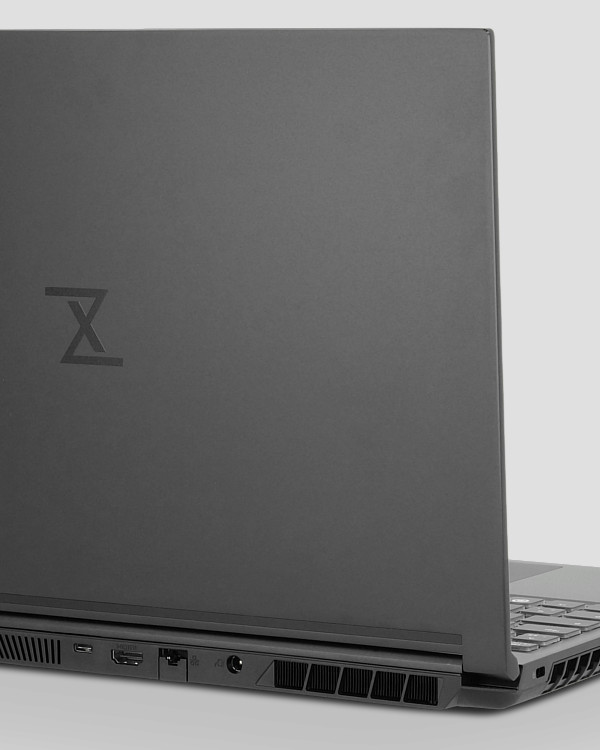
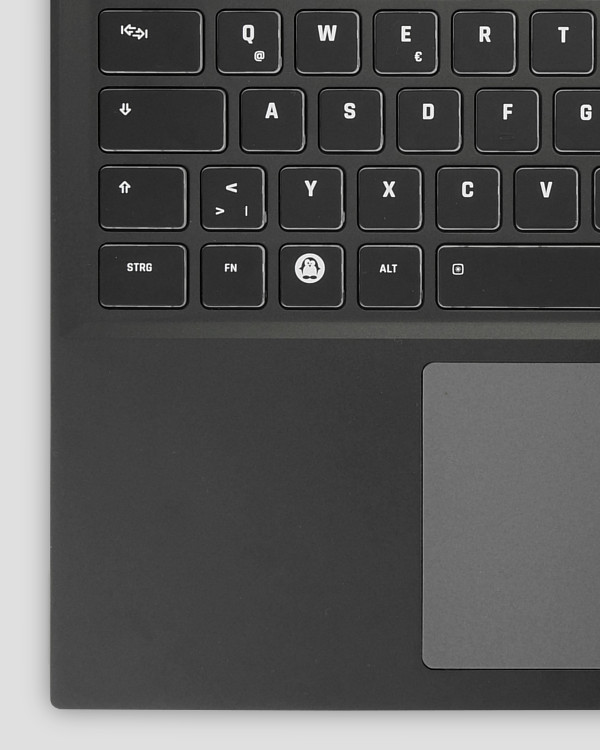
Thunderbolt 4 and SD card reader
Depending on the selected CPU, the TUXEDO Polaris 15 is equipped with a fast USB-C 3.2 Gen2 port (AMD Ryzen) or even with the universal all-round port Thunderbolt 4 (Intel Core) at the back of the device.
In addition to a maximum data transfer rate of 40 gigabits per second for blazingly fast data transfers and a charging power of 15 watts for peripherals, Thunderbolt 4 also allows connecting up to two 4K monitors via the integrated DisplayPort 1.4 signal.
Regardless of the processor configuration, 3 additional USB ports (2x USB-A 3.2 Gen1, 1x USB-A 2.0) as well as an SD card reader are available for data exchange. The RJ45 LAN port, microphone input and headphone output, as well as the obligatory Kensington lock, round off the TUXEDO Polaris 15's connectivity portfolio.

From left to right: Kensington Lock, USB 2.0 (Type-A), microphone in, headphone out

From left to right: USB-C (Intel: Thunderbolt 4 | AMD: 3.2 Gen2), HDMI 2.1 (with HDCP 2.3), Gigabit Ethernet, power supply

From left to right: Memory card reader (SD), 2x USB 3.2 Gen 1 (Type-A)
AMD Ryzen vs Intel Tiger Lake:
A hard decision to make
The TUXEDO Polaris 15 faces the customer with a difficult choice:
AMD Ryzen 7 5800H or Intel Core i7-11800H?
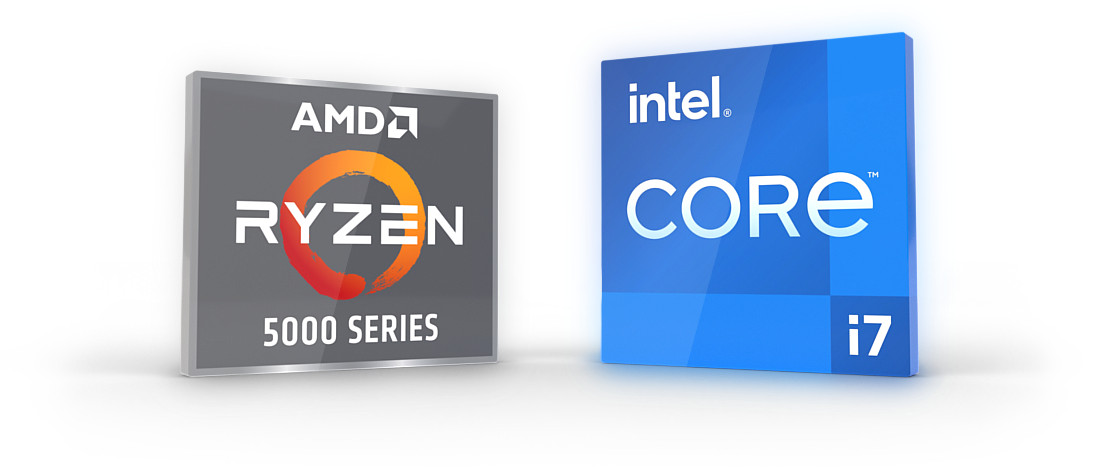
There has never been a harder decision between AMD and Intel, because the latter has not only succeeded with its new Core i7-11800H (8 cores | 16 threads) to surpass its predecessor, the Core i7-10870H, by a high margin, but even to largely catch up with AMD's highly decorated Ryzen APUs.
Responsible for this are the new Tiger Lake architecture and the new, more efficient 10 nm SuperFin manufacturing process, which delivers a significantly improved performance-per-watt.
However, the AMD Ryzen 7 5800H with its 8 cores / 16 threads does not have to hide behind the Intel counterpart at all: While the Core i7-11800H has a very slight lead in single-core workloads (e.g. gaming), the Ryzen 7 5800H takes the lead in multi-core workloads - depending on the TDP level - slightly to noticeably.

If your primary use case is gaming, the Intel Core i7-11800H is the best choice - very closely followed by the Ryzen 7 5800H. If your focus lies primarly on content creation though, the AMD APU benefits from its higher power efficiency in terms of multi-core performance - at least on low to medium TDP settings.
At higher powerlimits the Core i7 is even able to fully close the performance gap. The Intel CPU benefits from liquid metal between the die and heat sink as maximally effective thermal interface material, which cannot be applied on the Ryzen 7 5800H due to safety reasons in terms of its different chip layout on the mainboard.
So it's your choice between these two high end CPUs.
Which one will you opt for?
GeForce RTX 3060 with
maximum performance
For high-end graphical performance, the Understatement Gamer is equipped with the powerful NVIDIA GeForce RTX 3060.
Thanks to the highest possible TGP (Total Graphics Power) rating of 115 watts, the Polaris 15 provides the maxium tier version of the NVIDIA GeForce RTX 3060.
Due to NVIDIA's Dynamic Boost technology, the GPU can even increase its power limit up to 130 watts in certain workload situations automatically for best possible graphics performance.
In combination with the 6 GB GDDR6 VRAM, the entry level high-end GPU offers the best price-performance ratio and enough reserves for high-resolution gaming on the razor-sharp WQHD display.
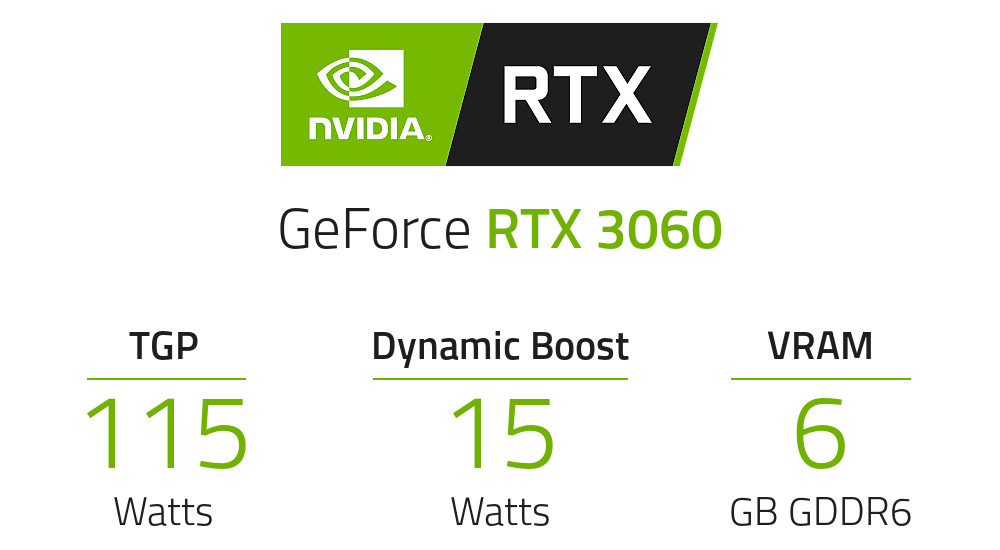
Better performance. Better cooling.
In order to constantly ensure highest graphics performance, the TUXEDO Polaris 15's cooling system has been upgraded while the chassis' height has been extended by only 3 mm.
This results in an improved balance of almost unchanged high portability but noticably better cooling performance: With a height of 23 mm and a weight of only around 2 kg, the Polaris 15 remains a still fairly thin and light gaming notebook while the slightly increased case volume ensures bigger heatsinks and fans.
What remains unchanged though, is the discreet and elegant design of the Polaris 15's black aluminum chassis, which also allows using the Linux gaming notebook in the office, meeting room or lecture hall.
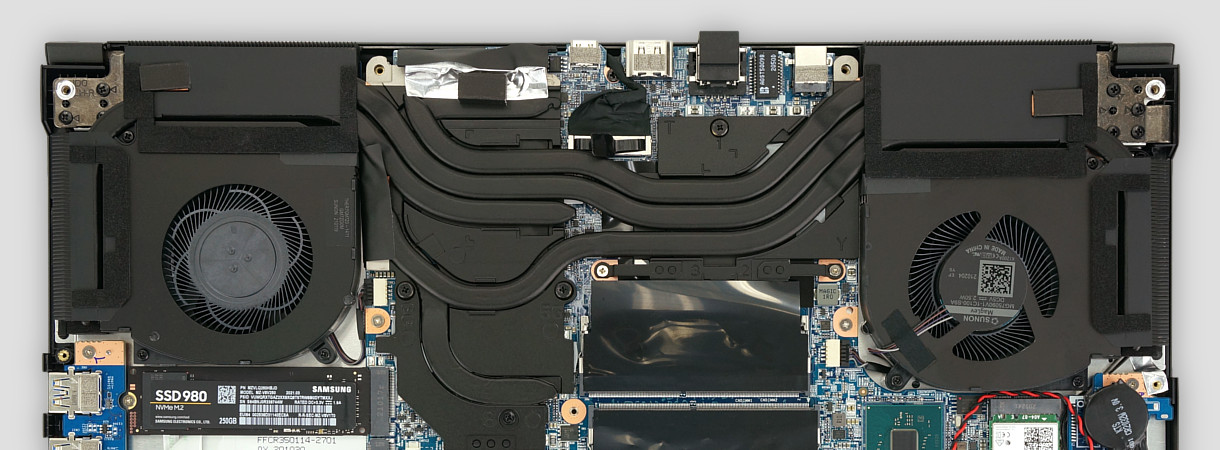
Full-HD or WQHD:
Take a look for yourself!
In the new generation, the TUXEDO Polaris 15 provides two different display options to choose from: In addition to a Full HD IPS display with up to 240 Hz refresh rate, a WQHD screen with 2,560 x 1,440 pixels and a frame rate of 165 Hz is now also available.
The significantly sharper image of the new WQHD display shows its strengths especially in everyday use: Text, high-resolution images or graphics look very sharp-edged and high in detail, texts are comfortably readable even in small font sizes without straining the eyes.
The difference is also noticeable in games but not quite as big. So the decision whether WQHD or Full HD is up to personal preference: While the GeForce RTX 3060 has enough reserves for high-resolution gaming, 1080p gamers benefit from maximum frame rates to fully take advantage of the display's high refresh rate.
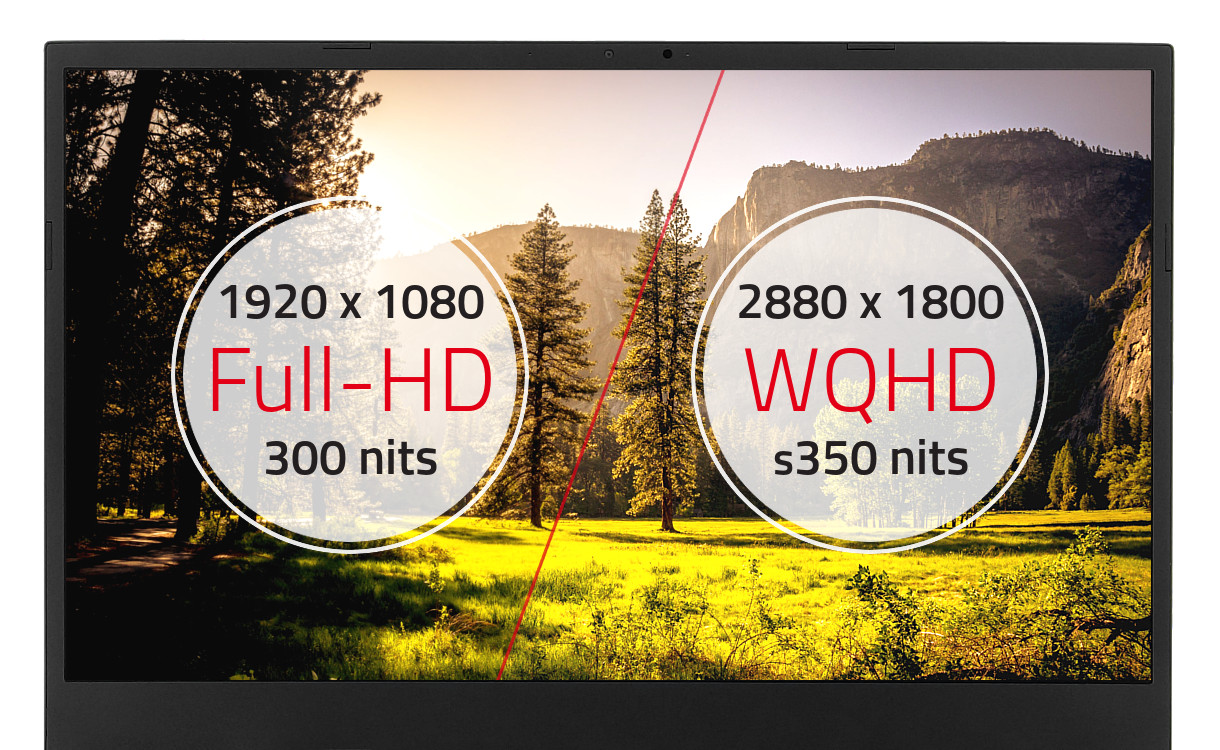
Up to 7 hours of battery life
Speaking of battery life: The TUXEDO Polaris 15 features an internally screwed 62 Wh lithium-polymer battery that enables the Linux gaming laptop to run for up to 7 hours (idle) away from the power socket.
Under more realistic working conditions with WiFi on, office usage and medium display brightness (~150 nits), around 6 hours can be reached until the Polaris 15 finally gets thirsty for the 180 watts power supply again.
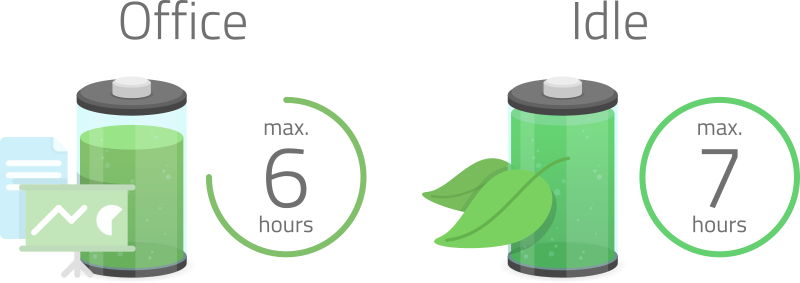
We are personally there for you Monday to Friday from 9 am to 1 pm and from 2 pm to 5 pm (German time). But also outside these times, you can contact our team with your request by e-mail. You will receive confirmation of receipt within approximately 15 minutes. If not, please feel free to contact us by phone. Please include your order number, the model name of your laptop or PC and as detailed a description of your request as possible. The more details you give us, the faster we can process your request!

